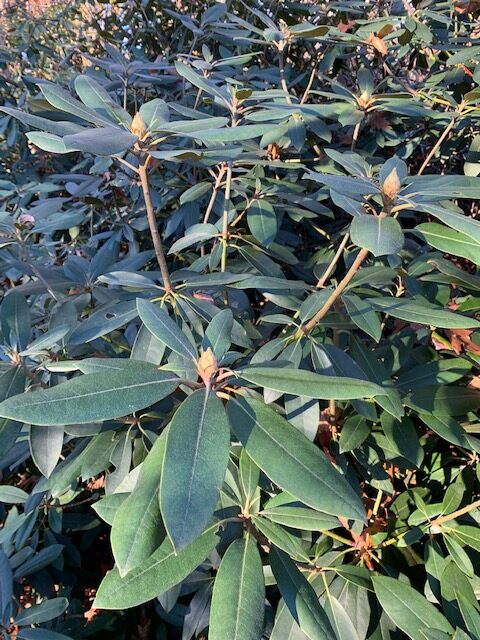
This week on our Around the Grounds blog, we monitor some plummeting temps to see how well our native Rhododendrons fare. How adaptable are they really? You might be surprised!
How cold is it outside? Let’s check the Rhododendron to find out….
Not too bad — definitely above freezing:
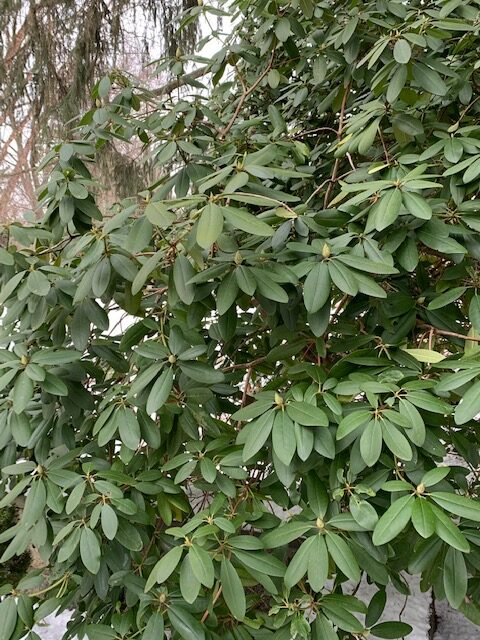
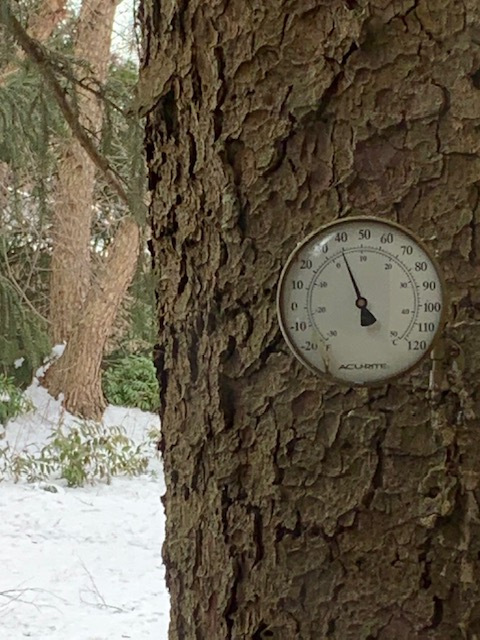
Now it’s around freezing:
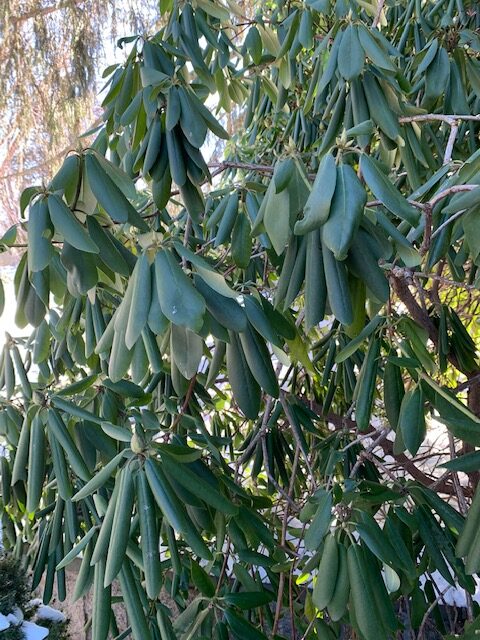
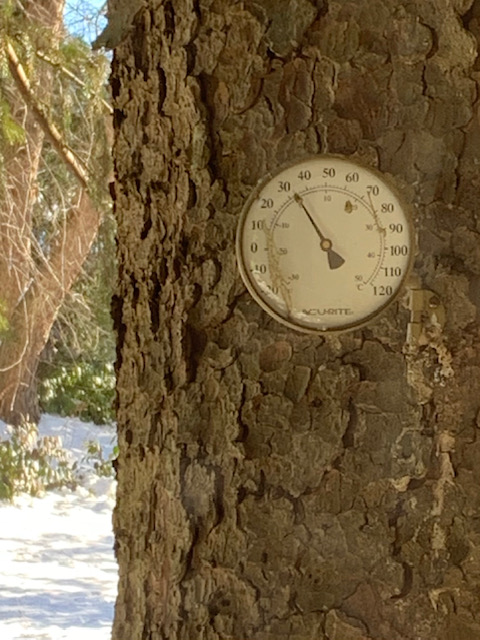
Oh, it’s colder now, around 25 degrees:
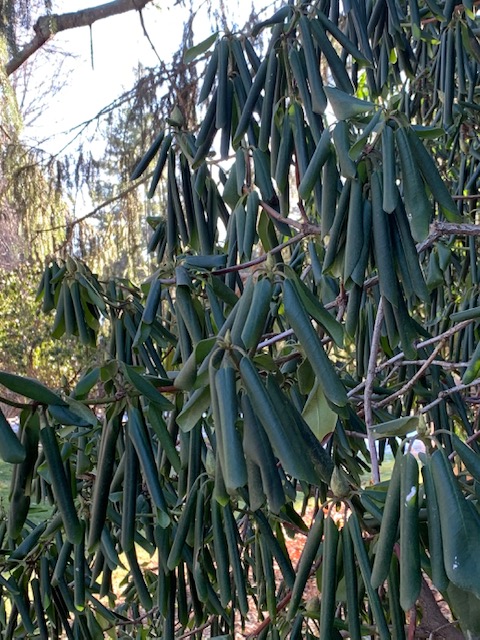
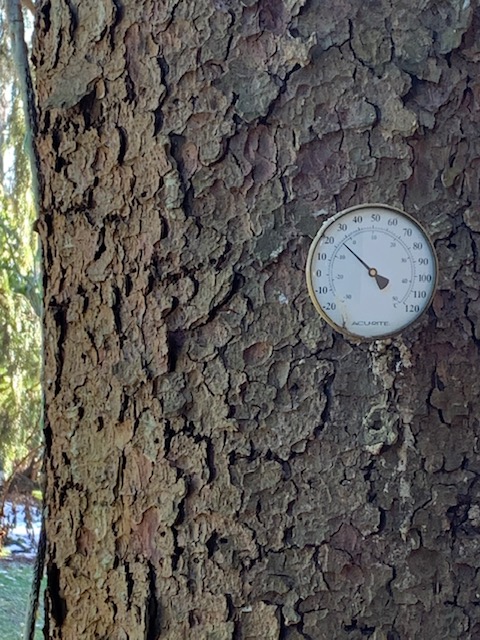
Yikes! It’s really cold now, 20 degrees or colder:
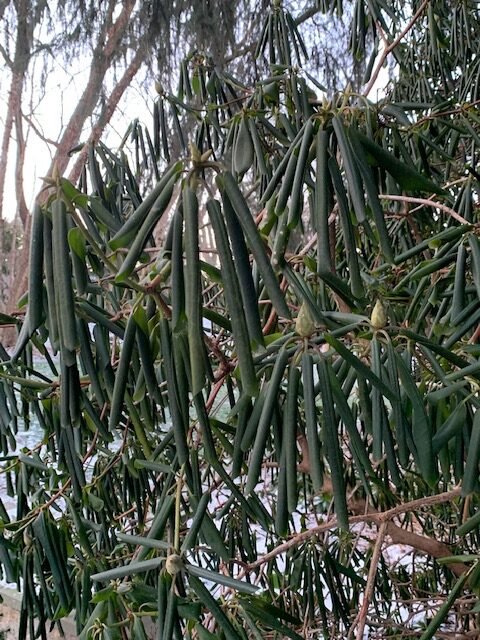
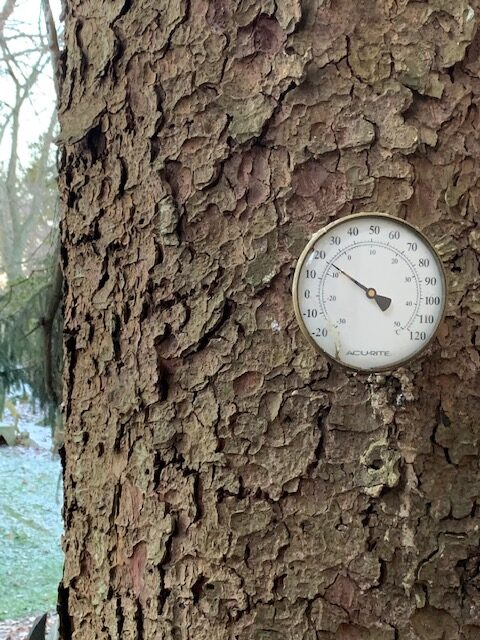
The Rhododendron is surprisingly accurate as a cold weather thermometer. Its leaf-rolling trick protects the leaves from damage due to rapid freeze and thaw cycles by reducing surface area. This defense helps it thrive as an evergreen.
The genus Rhododendron is ancient. Fossils of Rhododendrons over 50 million years old have been found in Alaska. The name is Greek from rhodos meaning rose and dendron meaning tree. There are over 1,000 species of the “rose tree” on Earth, ninety percent of them found in Eurasia. There are tens of thousands of hybrids and cultivars.
In the US, there are only 27 native species of Rhododendron, and most of them we know as azaleas. Azaleas are part of the same genus, but their flowers have 5 stamens rather than 10, and virtually all of our native azaleas are deciduous, dropping their leaves in the fall.
The evergreen Rhododendron is an iconic shrub in the Eastern US. It is hard to imagine our landscape without it. Its big shiny leaves and glorious flower clusters in late spring make it a year-round favorite. The two native evergreen “rhodies” in our region are Catawba (Rhododendron catawbiense) and Rosebay or Great Laurel (Rhododendron maximum). While Catawba’s native range is further south, in southern Appalachia and the Piedmont, Rosebay dominates the northern territory from eastern Maine all the way to Georgia. Both do well in rich acidic soil and moist woodlands. Catawba is the one we see most often in our suburban landscapes, either in its native form with pinkish-purple flowers, or hybrids like ‘Roseum Elegans’ and ‘English Roseum.’ The big showy flowers we see in mid-spring in a range of colors from pale pink to hot fuchsia usually are Catawba hybrids. Rosebay Rhododendron, with larger, slightly floppy leaves, and pinkish-white flowers, grows taller and blooms a few weeks later.
Both shrubs make great privacy screens. Left to their own devices in the wild, both Catawba and Rosebay can form massive, impenetrable thickets that shade out competing plants, including trees. In the Appalachians, Rhododendron thickets viewed from a distance are so dense and treeless that they appear smooth. Locals call them Rhododendron “slicks” or “balds” because they look almost like lawns on distant hills. Up close, the reality has earned them the name “rhododendron hells.”
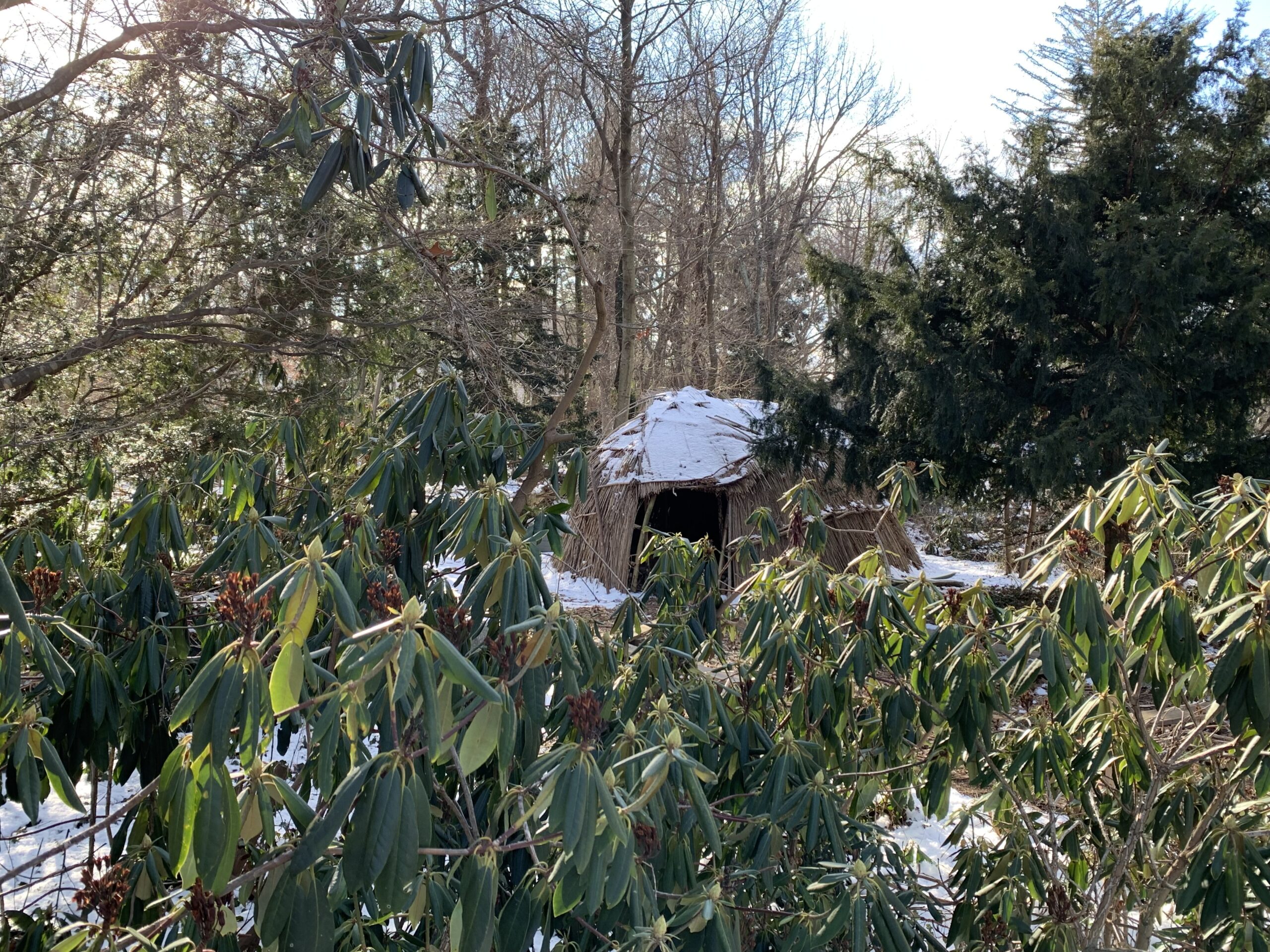
On the other hand, birds do love a thicket! A big Rhododendron close to the house will give you a bird-watching site all year around.
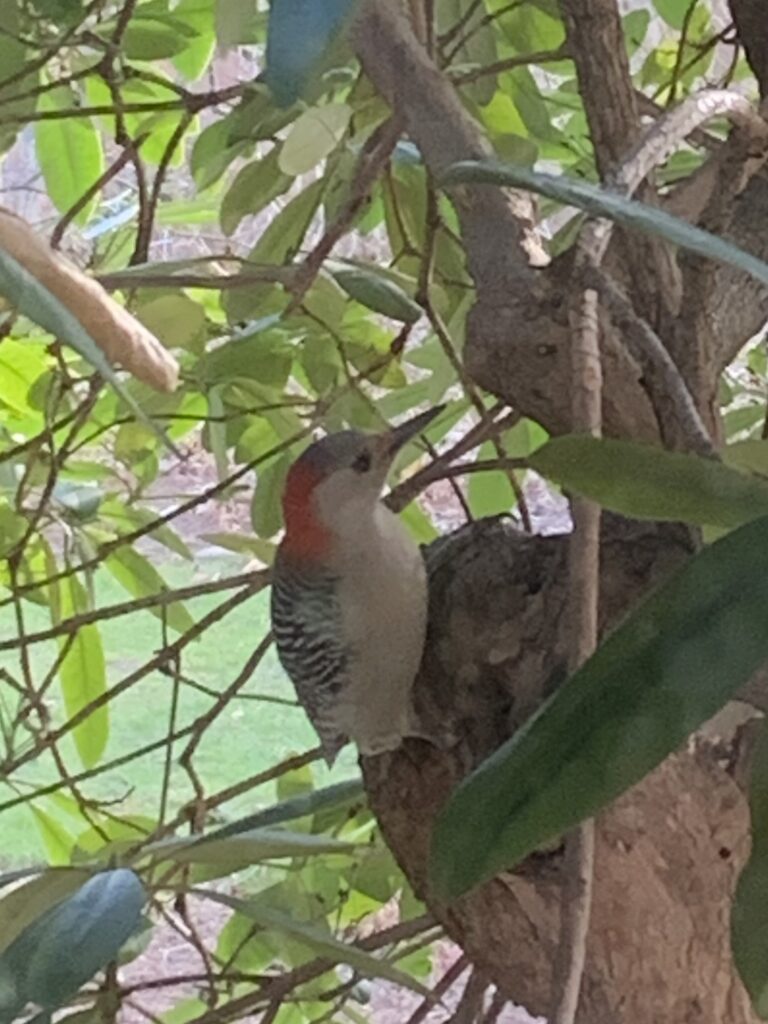
Rhododendron is known to be toxic to horses, sheep, and other grazing animals. So, it is a mystery how deer manage to strip leaves within their reach. No doubt they prefer other food, but they seem to know just how much Rhododendron they can eat without ill effects; and they may do that.
But on those bitter cold days when the rhodie leaves curl up just as tight as they can, it helps to have a warm drink, and think about what that shrub is planning for you for spring.
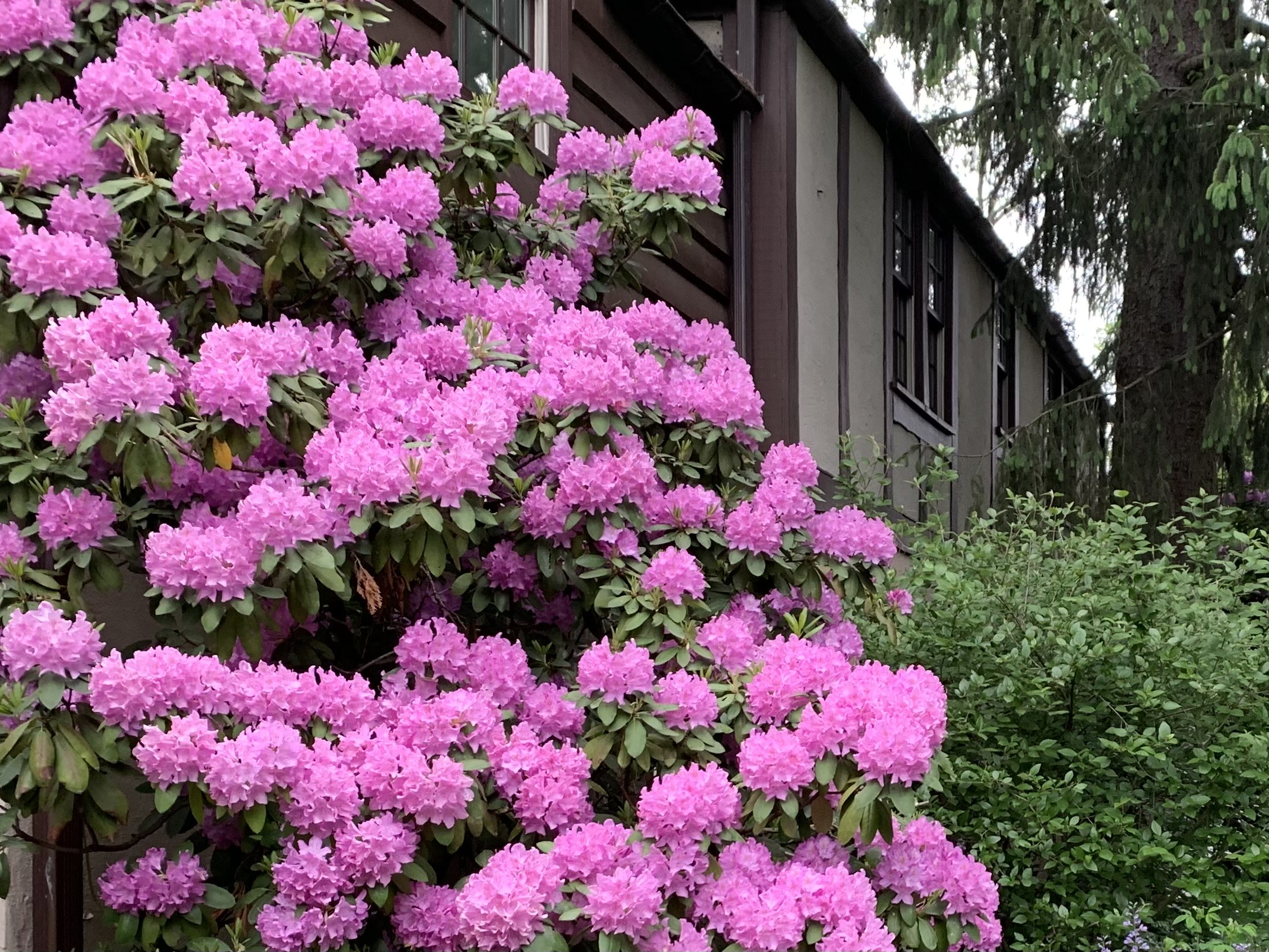
This blog is authored weekly by Cathy Ludden, conservationist and native plant educator; and Board Member, Greenburgh Nature Center. Follow Cathy on Instagram for more photos and gardening tips @cathyludden.

GNCs rhododendrons are memorable to me…. from 40 years ago when I first started visiting the Center with my kids! How old must these beauties be?
Good question! Some of the thickets look like they’ve been there forever!
Fascinating! Good to have the leaf phenomenon explained.
A natural thermometer and so beautiful! Thanks for this information. I love learning from you.
Thanks, Tracey!
Cathy, I really enjoy your posts. Informative and lively. Keep them coming!
Thanks for the feedback! Really appreciated!
If the leaves do not curl in the cold does that mean it is not native? Cena
Really interesting question, Cena! The answer is “probably.” There is research indicating that the more cold-hardy a Rhododendron is, the more dramatically its leaf drooping and rolling behavior is. Our natives, R. Maximum and R. catawbiense, are well-adapted to our cold temps and show strong leaf-drooping and rolling behavior to protect themselves. More tender cultivars, including non-native hybrids, do not show as dramatic leaf-changes in cold weather and seem to be less resistant and less hardy, probably as a result. It’s a good bet that shrubs with less dramatic leaf drooping and rolling are less cold-hardy cultivars, and probably include at least some non-native parentage. Those plants may do better with some winter protection, especially from sun, when temps drop well below freezing.